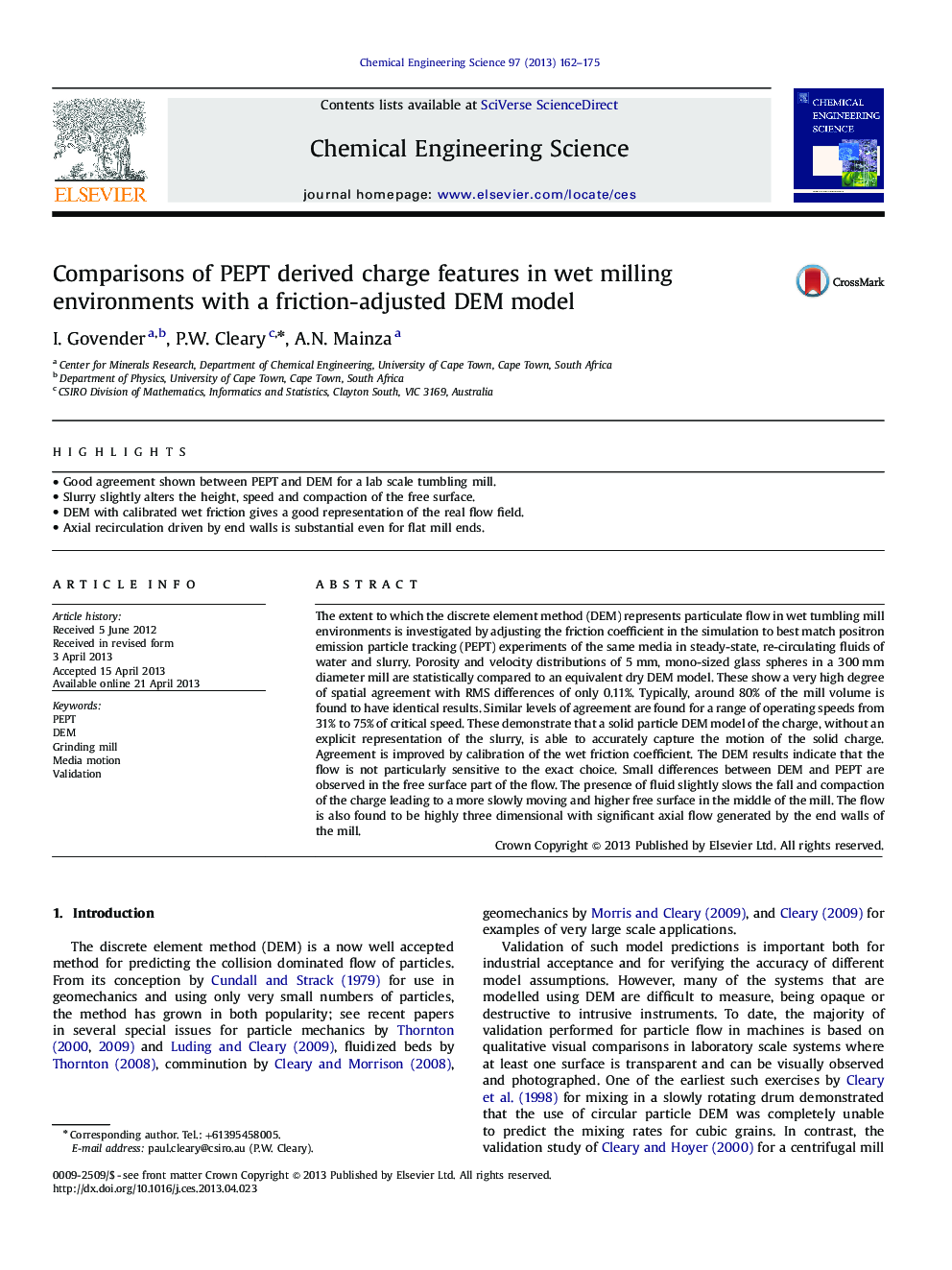| Article ID | Journal | Published Year | Pages | File Type |
|---|---|---|---|---|
| 155190 | Chemical Engineering Science | 2013 | 14 Pages |
•Good agreement shown between PEPT and DEM for a lab scale tumbling mill.•Slurry slightly alters the height, speed and compaction of the free surface.•DEM with calibrated wet friction gives a good representation of the real flow field.•Axial recirculation driven by end walls is substantial even for flat mill ends.
The extent to which the discrete element method (DEM) represents particulate flow in wet tumbling mill environments is investigated by adjusting the friction coefficient in the simulation to best match positron emission particle tracking (PEPT) experiments of the same media in steady-state, re-circulating fluids of water and slurry. Porosity and velocity distributions of 5 mm, mono-sized glass spheres in a 300 mm diameter mill are statistically compared to an equivalent dry DEM model. These show a very high degree of spatial agreement with RMS differences of only 0.11%. Typically, around 80% of the mill volume is found to have identical results. Similar levels of agreement are found for a range of operating speeds from 31% to 75% of critical speed. These demonstrate that a solid particle DEM model of the charge, without an explicit representation of the slurry, is able to accurately capture the motion of the solid charge. Agreement is improved by calibration of the wet friction coefficient. The DEM results indicate that the flow is not particularly sensitive to the exact choice. Small differences between DEM and PEPT are observed in the free surface part of the flow. The presence of fluid slightly slows the fall and compaction of the charge leading to a more slowly moving and higher free surface in the middle of the mill. The flow is also found to be highly three dimensional with significant axial flow generated by the end walls of the mill.
